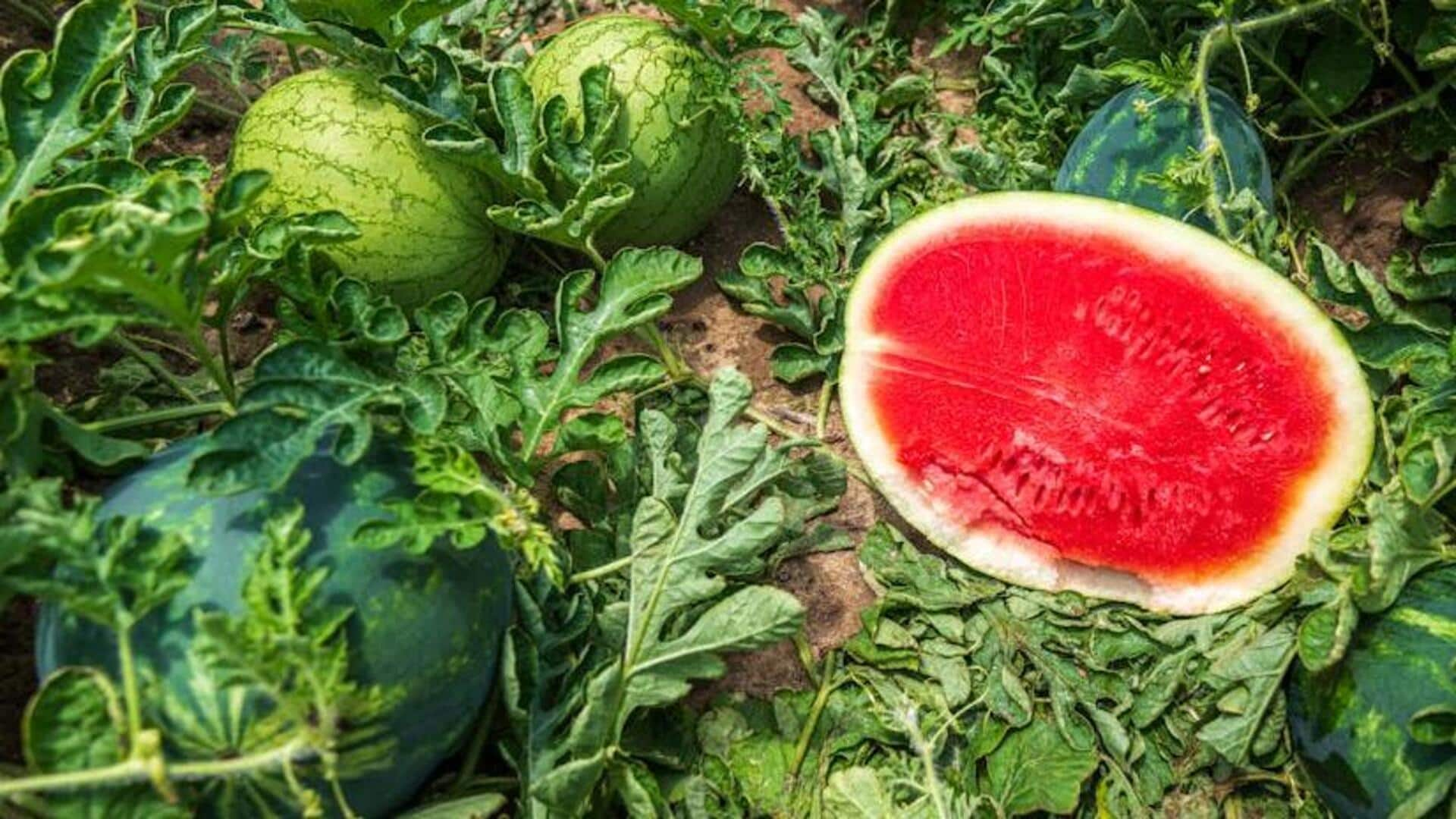
How to grow juicy watermelons in your backyard
What's the story
Growing watermelons in your backyard is a true delight, providing you with fresh and juicy fruits straight from your garden.
This article gives you key tips for growing delicious watermelons, covering soil preparation, planting, watering, and pest control.
Follow this guide and savor the taste of summer with your own home-grown watermelons.
Variety
Selecting the right variety
Picking the right watermelon variety is key to success.
Choose varieties that are adapted to your climate and soil conditions.
Cooler climates should opt for short-season varieties, while warmer areas can go for long-season types.
Doing a bit of research and selecting a variety that suits your growing conditions will ensure you get to enjoy juicy and tasty fruits come harvest time.
Soil prep
Preparing the soil
Watermelons thrive in well-drained, sandy loam soil with a slightly acidic pH ranging from six to 6.8.
Before planting, amend the soil with organic compost to enhance fertility and drainage.
Use a test kit to check your soil's pH. If it's too acidic or alkaline, you can use lime or sulfur, respectively, to adjust the pH to the desired range.
Planting
Planting techniques
To maximize success, sow watermelon seeds directly in the garden once all threat of frost has subsided and soil temperatures have reached a minimum of 70 degrees Fahrenheit.
Plant seeds one inch deep in hills six feet apart to provide sufficient space for sprawling vines.
Or, if you want to get a jump on the growing season, start seeds indoors four weeks prior to transplanting.
Watering
Watering wisely
Watermelons require steady moisture for best growth but can easily get root rot if overwatered.
Ensure to supply an inch of water weekly either through rainfall or irrigation. Increase this to two inches as the fruits develop and ripen.
Using drip irrigation or soaker hoses is advised. This method supplies water directly to the roots while keeping the leaves dry, which aids in disease prevention.
Pest control
Managing pests naturally
You can tackle common pests like cucumber beetles and aphids without reaching for the chemical spray.
Encourage beneficial insects like ladybugs or use floating row covers to shield plants during vulnerable early growth stages.
Regularly check your plants for signs of trouble and remove affected parts quickly to prevent pests from gaining a foothold.